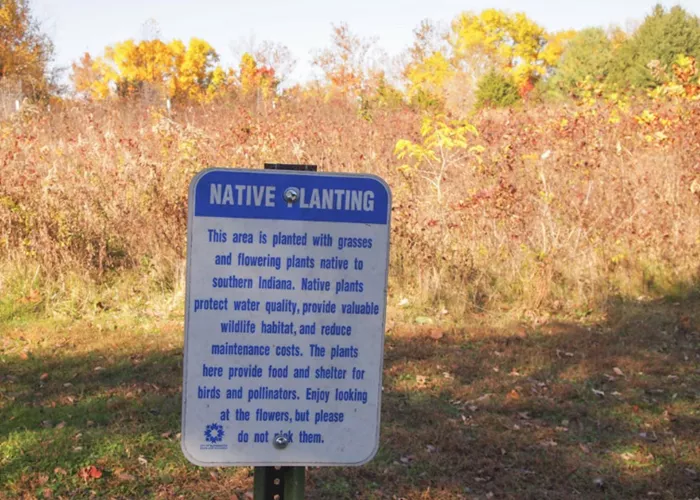A century ago, sugar maple trees were a prominent feature of the Indiana University Bloomington campus, renowned for their vibrant red fall leaves. These trees even received a special mention in a 1918 commencement address by President Theodore Roosevelt. But today, sugar maples are struggling to survive, as climate change takes its toll.
Mia Williams, IU’s University Landscape Architect, explained that the trees are simply not thriving anymore. Drought and poor soil conditions, worsened by climate change, have made it difficult for the maples to survive. Ethan Iversen, president of IU’s Rewild Club, added that increased heat and precipitation are exacerbating these challenges.
The decline of sugar maples is part of a broader environmental crisis affecting Bloomington and the state. Rising temperatures and extreme weather events, such as floods, are damaging ecosystems and disrupting local infrastructure.
According to the U.S. Department of Agriculture’s plant hardiness zones, Indiana’s climate has shifted, and experts predict another shift by mid-century. Williams, who has worked at IU for nearly 30 years, noted that the state has already moved into a new plant hardiness zone, changing which plants can thrive in the area.
Flooding, which has worsened due to climate change, poses additional risks to IU’s natural areas. In 2022, Capital Planning and Facilities began a two-phase project to restore and protect the Campus River, which had suffered from severe weather-related erosion. Williams observed that the river’s banks were deteriorating, and bridges and other infrastructure were at risk due to more frequent and intense storms.
Iversen, who is pursuing a master’s degree in environmental science, worked with Landscape Services and saw firsthand how extreme weather is affecting university operations. “Arborists are always busy clearing fallen trees after storms,” he said.
Indiana’s climate outlook suggests that these environmental challenges will only intensify. Rising temperatures, increased rainfall, and more severe storms are expected to become even more common over the next decade, which will have serious consequences for plants and wildlife.
For IU Bloomington, these changes hit at the heart of the university’s identity. The campus, known as the “Woodland Campus,” is cherished for its natural beauty, with trees and foliage playing a significant role in the university’s appeal. Iversen said many people choose IU for its natural setting, especially the stunning fall colors.
Williams believes that the landscape is deeply tied to the student experience, describing it as an “academic ecosystem” that contributes to students’ well-being and focus. Research has shown that exposure to nature improves mental health and concentration, a benefit that Williams says is unique to IU.
However, as climate change continues to disrupt local ecosystems, IU’s landscape management practices will need to adapt. Rewild IU, a student-led organization, is working to help meet these evolving needs. The group collaborates with Landscaping Services to restore natural areas on campus, such as woodlots and marshlands, and focuses on promoting native plant species that are more resilient to the changing climate.
Iversen described Rewild IU as a “mini land trust” that prioritizes ecological health over aesthetics. While campus landscaping often focuses on appearance, Rewild’s efforts are centered on long-term sustainability. The group has planted species such as the Bald Cypress and Bur Oak, both of which can thrive in varying conditions and endure for centuries.
Williams emphasized the importance of planning for the future, noting that the goal is to create a legacy of trees and plants that will continue to thrive long after today’s students have graduated. “I want to plant trees that, even though I won’t see them mature, will be there for future generations,” she said.
As climate change reshapes Indiana’s ecosystems, IU Bloomington is taking steps to adapt and ensure the long-term health of its campus landscape. Through a combination of thoughtful stewardship and student-driven initiatives, the university hopes to preserve the beauty and ecological balance that have made the campus so special for over a century.
Related topics:
- Police Seize Over 8,000 Cannabis Plants in Fairfield Raids, Shut Down 8 Grow Houses
- Slugs Will Flee Your Plants Instantly with This One Natural Ingredient
- Warning: ‘Toxic’ Plant Found in Australia Can Be Dangerous


